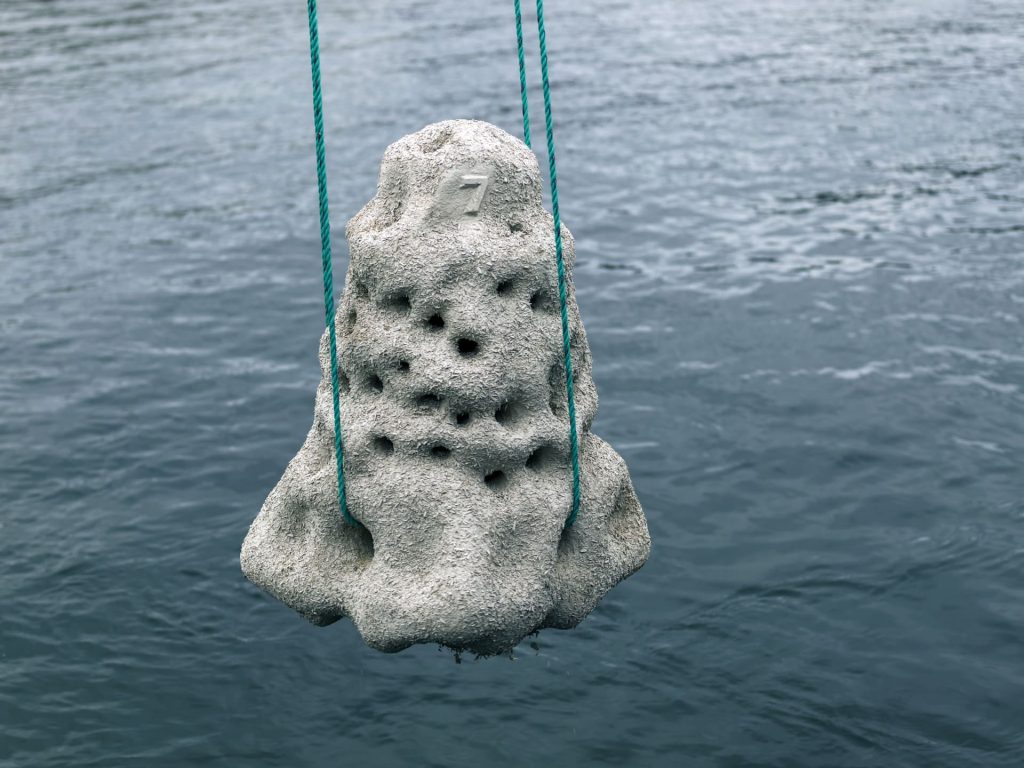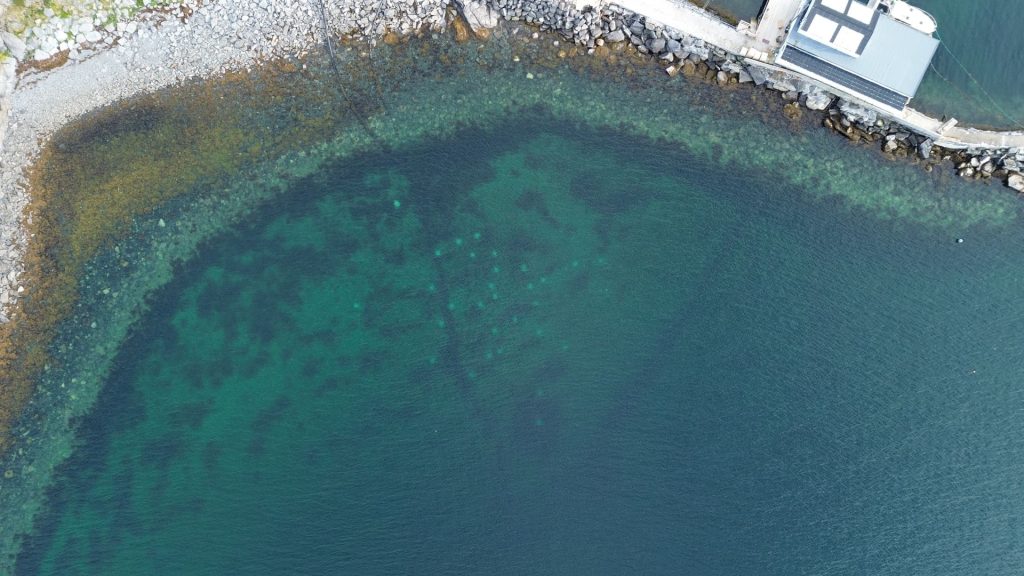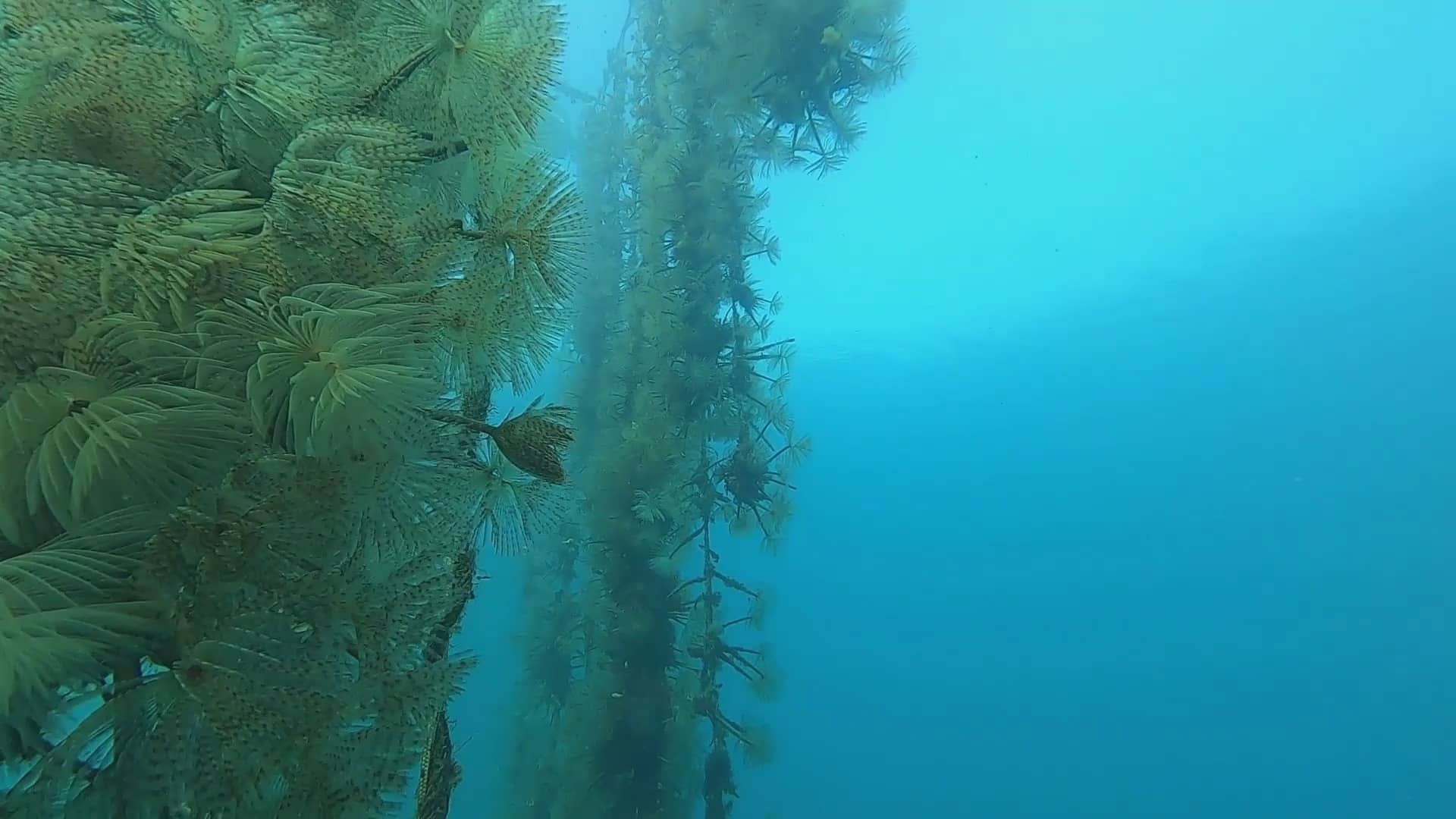Elnida-rif® reefs. Photo credits: Hans Kristian Strand, IMR.
In the heart of the Norwegian Arctic, within the Porsangerfjord, a new chapter in marine regeneration science is unfolding. On August 29, 2025, 30 Elnida-rif® reef units were installed, an innovation developed by Underwater Gardens International (UGI) in collaboration with Norway’s Institute for Marine Research (IMR), as part of OCEAN CITIZEN.
More than artificial structures, these reefs are custom-designed habitats created to address two major ecological challenges in the region: providing safe refuge for juvenile Atlantic cod (Gadus morhua) and promoting the growth of kelp forests (Saccharina latissima, Alaria esculenta, Laminaria spp.), which are pillars of biodiversity and marine balance in Arctic waters.

Elnida-rif® reef deployment. Photo credits: UGI.
Applied science and ecological design
The Elnida-rif® reefs were installed in an organic pattern, forming a kind of underwater constellation. This layout not only increases the surface area available for colonization by algae and invertebrates, but also enhances biological connectivity between microhabitats, an essential factor for creating a more diverse and resilient ecosystem.
The operation was strategically timed for late summer, coinciding with the reproductive phase of kelp, when spores released into the sea seek new surfaces to settle on. This timing increases the likelihood that by next spring, dense underwater forests will develop, providing shelter and food for countless marine organisms.
Why this project is urgent
Accelerated Arctic warming, combined with overfishing and habitat loss, has significantly reduced cod populations and the extent of kelp forests. Both are essential not only for ecological balance but also for the local economy, as cod fisheries are deeply tied to the cultural identity and livelihood of coastal communities in northern Norway.
Expected benefits for the ecosystem
The deployment of these reefs carries both immediate and long-term ecological benefits:
- Increased survival of juvenile cod, a species of high ecological and commercial value
- Restoration of kelp habitats, crucial for biodiversity and key players in carbon capture
- Greater ecosystem complexity, creating conditions for colonization by invertebrates, microorganisms, and associated species
- Development of a replicable model that can be adapted to various marine environments within and beyond the Arctic
Additionally, the project includes a scientific monitoring system, with metrics on biodiversity, kelp coverage, and juvenile cod abundance, allowing real-time evaluation of the intervention’s effectiveness.

Elnida-rif® reefs, aerial view. Photo credits: UGI.
A living laboratory in the Arctic
The installation transforms the Porsangerfjord into a true living laboratory of blue innovation. Researchers from IMR and the OCEAN CITIZEN consortium will be able to study colonization processes, biodiversity changes, and ecosystem dynamics in real time—generating insights that can be applied to future restoration projects.
International collaboration to regenerate the oceans
This milestone reflects the power of collaboration between science, technology, and global commitment. UGI brings expertise in marine biotechnology and regenerative design, while IMR leads with local scientific knowledge. At OCEAN CITIZEN, we bring together universities, research centers, and institutions from various countries to demonstrate that marine regeneration is possible when diverse actors work together.
Elnida-rif® reefs are not just about conserving what remains: they aim to rebuild what has been lost. They are a tangible example of how innovation can pave the way toward healthier, more resilient, and vibrant oceans.
Seeds of the future beneath the ice
In a world where the ocean faces mounting pressures, these reefs are far more than submerged structures: they are seeds of the future in the Arctic. They remind us that regeneration is not just a possibility, but a quiet and powerful reality unfolding beneath the surface.




